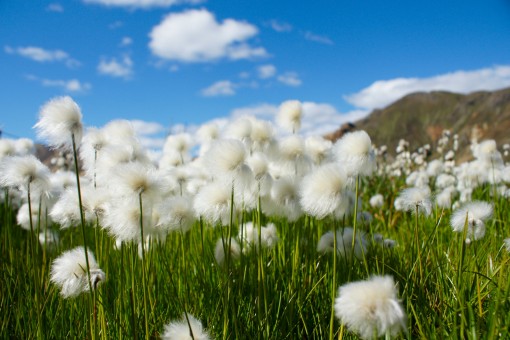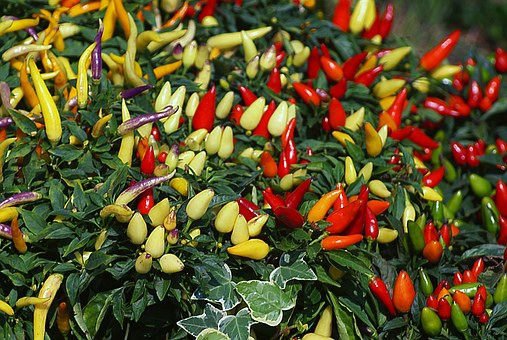What are the effects and functions of the fern grass? How to breed it? Is it of high medicinal value?
The grass is a kind of traditional Chinese medicine, also known as Selaginella officinalis or Sabina vulgaris, is a perennial fern, the whole plant can be used in medicine, especially high medicinal value, can be used for some common human prevention and diseases. Many people are not clear about the efficacy and function of reviving grass. How on earth should it be raised? What are the medicinal values? Next, I will give you a comprehensive understanding.
First, the efficacy and function of reviving the dead grass.
1. Promoting blood circulation and regulating menstruation
It can accelerate blood circulation and prevent purpura. It can be used in the treatment of many common diseases such as amenorrhea, dysmenorrhea, fall injury, blood stasis and pain in women.
2. Stop bleeding
The herb is a kind of traditional Chinese medicine that can stop bleeding. It can accelerate platelet coagulation and stop bleeding quickly. When people have traumatic bleeding, they can directly apply it after crushing it to stop bleeding. In addition, this kind of traditional Chinese medicine can also be used for the treatment of many common diseases such as hematemesis, hematochezia and hematuria, and the therapeutic effect is also obvious.

3. Prevention of gastric ulcer
It can relieve spasm and relieve pain and eliminate inflammation. It can be used for the prevention and treatment of many common diseases such as human gastric ulcer and gastritis and stomachache. It can speed up the healing of ulcer and reduce the occurrence of gastric ulcer.
4. Cancer prevention and anti-cancer
Nine death returning grass is a kind of traditional Chinese medicine that can prevent cancer and anti-cancer. It contains natural medicinal ingredients that can prevent canceration of human tissue cells and inhibit the regeneration of cancer cells, and it can inhibit the activity of various viruses in the human body. It can reduce the damage of these viruses to human tissues and cells, and the incidence of cancer can be significantly reduced by taking appropriate amounts.
5. Whitening light spot
Whitening light spot is also an important role of traditional Chinese medicine, it can inhibit pigment deposition, but also can nourish whitening skin, usually crushed grass and egg white mixed together to make a mask, and then externally applied to the skin of the face.
6. Spasmolysis
The apigenin contained in Jiushu Huanshen has a moderate antispasmodic effect on smooth muscle.
Second, how to raise grass to revive the dead?
1. The grass likes to grow in a warm and damp environment, and has a certain ability to tolerate drought, shade and barren, so this plant is relatively easy to raise. The location needs to be ventilated smoothly and can not be directly exposed to sunlight, so it can be placed in the windowsill and other indoor maintenance.
2. Avoid the sun. Dead grass does not like long-term direct sunlight, especially strong light exposure, usually only need to provide scattered light or soft light to ensure normal growth. Therefore, we should pay attention to take necessary shading measures in time under the maintenance environment.
3. Temperature protection. It is most suitable to grow in the temperature environment between 22 ℃ and 28 ℃. In summer high temperature weather, in addition to shading measures, it is necessary to strengthen ventilation and spray water properly to keep moisture and cool down. In winter, it is usually necessary to ensure that the temperature in the growing environment is above 10 ℃ to maintain normal growth, and when the temperature is kept above 0 ℃ to survive the winter safely.
4. Scientific watering. In the growing season, the grass likes the moist growth environment, and has certain requirements for basin soil humidity and air humidity, so as to ensure that the plant can maintain good growth. The basin soil is usually watered after drying, and it is relatively drought-resistant. During the drought period, the leaves curl inward, and after obtaining water, they will soon return to normal growth.
5. Reasonable topdressing. The plant is not highly dependent on fertilizer. after all, this plant is relatively barren, but in order to keep it growing well during the growing period, it is usually possible to apply liquid fertilizer every two weeks with a concentration of about 30%, mainly nitrogen fertilizer and supplemented by phosphorus and potassium fertilizer.
6. Change the basin at the right time. As a potted plant, it is usually planted in a shallow pot, but if it has been raised in a pot for a long time, it needs to be treated in a timely manner. If there is enough room for growth in the original basin, then we only need to change the soil. The basin replacement work is usually carried out in spring, when turning the basin, the new basin soil can be used instead of the old one.
Third, the medicinal value of reviving the dead grass.
Nine dead returning soul grass is not only an ornamental plant, but also a valuable medicinal plant. It is a convergent hemostatic agent, which can be used to treat traumatic hemorrhagic disease and knife wounds.
[synonym] can't be killed.
[source] is the whole grass of crassulaceae.
[plant morphology] Sedum verticillata is a perennial herb, 40cm high and 100cm tall. The beard root is thin. Stem erect, unbranched.
Leaves 3-5 whorled or opposite, rectangular-rounded-lanceolate to ovate-lanceolate, 4-8 cm long and 2.5-3.5 cm wide, apex acute, base cuneate, margin undulate sparsely toothed, leaves often pale, almost sessile.
Corymbose inflorescences terminal, dense, apex semiglobose, 2.5-6 cm in diam.; sepals 5, lanceolate, ca. 1 mm; petals 5, yellowish white, light green to white, rectangular-elliptic, 4-5 mm long; stamens 10; scales strip-cuneate; carpels 5, rectangular.
The florescence is from July to September.
Born in grass on high hillsides or in rocks at the edge of ditches.
It is distributed in Sichuan, Hubei, Anhui, Gansu, Shaanxi, Shanxi, Hebei, Shandong and Northeast China.
[collection] picked in summer and autumn, washed and used fresh.
[taste] bitter, flat.
[functional indications-efficacy of reviving herb] detoxification, detumescence and hemostasis.
Cure trauma, nameless swelling poison, snake bite and scorpion sting.
[usage and dosage] for external use: mash or squeeze juice.
[selected prescription] treat snakebite; fresh rhubarb, rhubarb, ginseng, alum, mash into mud, apply to the wound.
Time: 2019-04-08 Click:
- Prev

When will the dandelion seeds of "authentic fire grass" be planted? How many jin can you produce per square meter? How to plant height
Dandelion, also known as Hua Hua Lang, dandelion, edible dandelion, bedwetting grass, western dandelion, mother-in-law, is a common fire grass on hillsides, grasslands, mountains, wasteland and so on. It is recognized by more and more people, so there is a great demand for cooking and medicine.
- Next

Solanaceae plants pepper species what varieties of high yield? What are the key points of planting technology?
Chaotianjiao, also known as Wangtian pepper and small pepper, is a common perennial plant in Yunnan, Guizhou, Sichuan, Shanxi, Guangxi and other places. It is favored by pepper eaters because it is smaller than other peppers and full of spicy flavor. At present, it is planted in many areas.
Related
- Fuxing push coffee new agricultural production and marketing class: lack of small-scale processing plants
- Jujube rice field leisure farm deep ploughing Yilan for five years to create a space for organic food and play
- Nongyu Farm-A trial of organic papaya for brave women with advanced technology
- Four points for attention in the prevention and control of diseases and insect pests of edible fungi
- How to add nutrient solution to Edible Fungi
- Is there any good way to control edible fungus mites?
- Open Inoculation Technology of Edible Fungi
- Is there any clever way to use fertilizer for edible fungus in winter?
- What agents are used to kill the pathogens of edible fungi in the mushroom shed?
- Rapid drying of Edible Fungi

